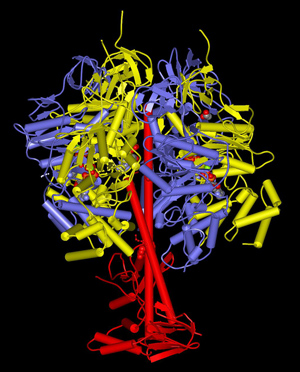

If Zimmer had included those items in his history lesson, it wouldn't be subtitled "*E.coli* and the New Science of Life" then, would it? As such, it misses out on much of bacteriology in favor of molecular genetics, barely mentioning Pasteur and Robert Koch not at all. My only complaints with this book are the obvious: This book presents one perspective, focused on one type of microbe. It's that palimpsest that serves as both a history book of how it has been modified from its ancestors, but also as an example of "Open Source" text available to modification by its descendents and accessible to horizontal gene transfer.
MICROCOSM CARL ZIMMER MANUAL
In the process of his story, Zimmer explains how the bacterial genome is more of a palimpsest rather than an instruction manual - a book that's been written and re-written many, many times. Then there's the story of E.coli's vast evolutionary potential - from antibiotic resistence to immune evasion tactics, the simple and rapid replication cycle of bacteria have enabled natural selection, ecological niches, and population divergence to be studied over the course of tens of thousands of generations. Even genetic engineering techniques were pioneered in E.coli, which Zimmer describes in the chapter on "Playing Nature" - a nice twist on the old saying "Playing God," that is actually more appropriate.
MICROCOSM CARL ZIMMER SERIES
A long series of discoveries, made with E.coli as the experimental system, have elucidated the mechanisms of DNA replication and transcription, regulation of gene expression, and basic metabolism. And of course no book on E.coli would be complete without re-tracing its role in molecular biology. Most pointedly, E.coli populations offer clues into the nature of cooperation and competition, altruism and spite.

Zimmer reinforces this theme with repeated mention of a Jacques Monod quote, "What is true for E.coli is true for the elephant. The theme running throughout is that E.coli is a microcosm for understanding all of life. E.coli's normal and pathological roles in the animal body have taught us volumes about the inventive potential of life. This simple bacterium and its various strains have always been there since we first started looking for the microbes involved in human disease. As Zimmer points out, E.coli has held a central role in microbiology since its first description by German pediatrician Theodor Escherich in the 19th century. Among other things, Zimmer tells us how E coli microbes talk to each other, how studies of their evolution represent the most powerful evidence in support of natural selection, and how they might just explain life on other planets.In Microcosm, Zimmer has eloquently condensed a century of scientific study surrounding Eschericia coli into an accurate and flowing story readable by anyone with even just a modest understanding of biology. Zimmer uses E coli as a prism to understand what life is, what it was, and what it will become. Most of us might only know E coli for its lethal strain that causes food poisoning. Since then, what was once nothing more than a humble resident of the human gut has become our best guide to what it means to be alive. Not only had Lederberg proved that bacteria have sex, he had also proved they have genes. The only possible explanation for their survival was that they were a product of sex. But slowly, a few colonies of survivors began to spread accross the dishes. His experiments used defective E coli strains lacking the essential molecules to reproduce by cloning which should, by rights, perish in the petri dish. He chose to observe the breeding habits of a certain bacterium called Escherichia coli, better known as E coli.

The 'few things' Lederberg discovered would revolutionise modern science and earn him a Nobel Prize. At the age of seven, he had declared that he hoped to become 'like Einstein' and to 'discover a few things in science.' Lederberg was motivated not by a displaced libido, but by scientific ambition. In 1946, a 20 year old medical school student called Joshua Lederberg decided to find out whether microbes make love.


 0 kommentar(er)
0 kommentar(er)
